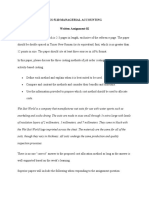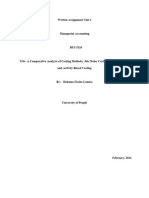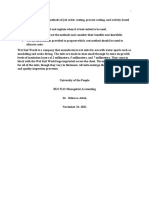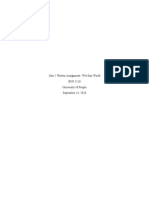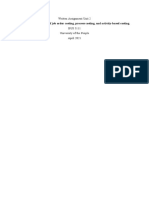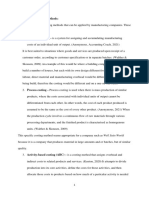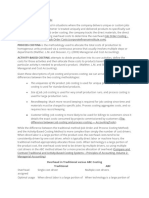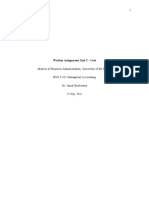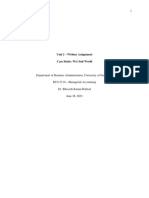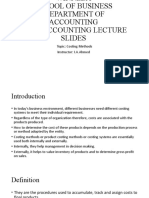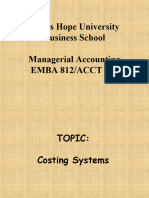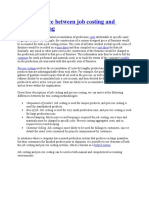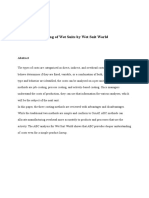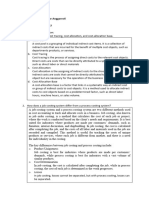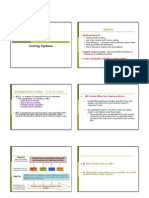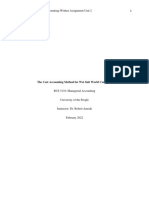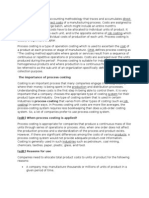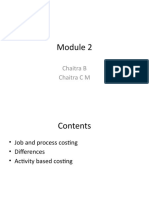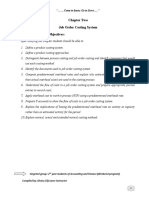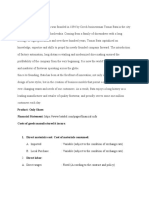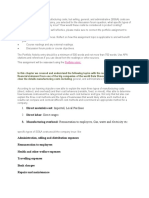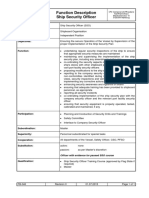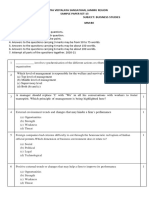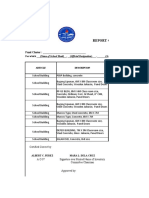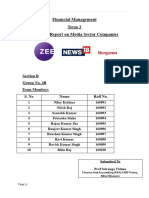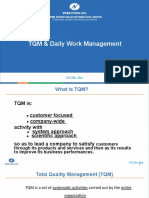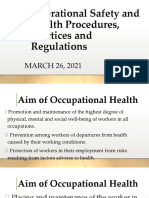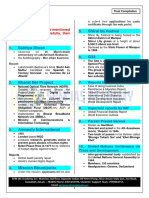Discussion of the Three Costing Methods.
Job costing is a method of determining the cost of a specific job. It is calculated after job is completed and
takes into consideration the actual direct costs of the specific job including direct labor and raw materials.
Job costing is usually reserve for unique jobs, projects or one-off production (JC vs PC, 2019).
Process costing is another costing method but in this case is more suited for mass production. The overall
process is divided into pieces or smaller processes where the last step feeds the next. Each process is
costed out for a batch of products and the final cost is determined by adding the smaller processes
together (JC vs PC, 2019).
Activity based costing is the final costing method and is best suited for complex environments where the
processes are too complex to pull apart so instead activities are identified in an organization and then
overheads are assigned to it; it is useful when of large amount of overhead costs are involved in the
overall process. Typically this method assigns more indirect costs to the activity than other methods of
costing. Additionally, activity costing not only includes the cost of doing something but also includes the
cost of not doing something, for example, if there is waiting time for parts to arrive this time is built into
the cost (Bragg, 2019).
Each method has its strengths and weakness. Job costing is great for determining the actual cost of
building a unique product whereas for larger mass production it becomes cumbersome and superfluous.
For a straight forward production line, process costing works well. Using Job costing makes no sense in
mass production as each product costs the same to make and seeing as the production steps are easy to
define and using activity costing would add a lot of unnecessary complexity. Activity based costing is
great for complex organizations that involve multiple processes that are difficult to break into stages and
where there may be many indirect costs that other costing methods wouldn’t capture. An example where
job costing would be good is for making one-off pieces of jewelry, for process costing a good example is
the mass production of a product such as toothpaste and activity based costing would work well for
�automotive manufacturing. Activity based costing applies to automotive manufacturing because it
involves huge infrastructure costs so a large part of the cost of the goods comes from the depreciation of
the machinery used to manufacture the cars. These machines, (robotic manufacturing machines), are very
capital intensive so it is important to include depreciation in the activity cost otherwise the calculations
would be deceptively low and could result in miscalculated profit margins and low profitability.
For Wet Suit World, I would recommend the Process Costing Method. The reason I would rule out Job
costing is that it is designed for one-off or unique products. Wet Suit World has roughly fifteen product
lines that it mass produces so using Job based costing would add a lot of redundancy and additional non-
beneficial administration costs. Activity based costing would also not be suited to this company as
activity costing is designed for complex systems; the production method and costs excluding raw
materials is similar across the sizes and thicknesses so the process is easily defined and is relatively
simple. Also the mass production of 15 styles and sizes of wetsuits is not overly complex and most of the
costs will be direct versus indirect overheads. As the production method and quality inspection stage are
always the same no matter the thickness or size or the wet suit, the primary variable is the raw materials;
larger suits use more material and presumably thicker materials cost more. To determine the cost, you
could determine the total production cost as a standard amount for all models produced and then calculate
the cost of the materials used for each size and thickness. Costs for the fifteen or so different models will
not vary dramatically over time. Therefore the best costing method for Wet Suit World is Process
Costing.
�References:
Bragg, S. (2019, February 26). Activity based costing. Retrieved February 8, 2020, from
https://www.accountingtools.com/articles/2017/5/14/activity-based-costing
Job Costing vs Process Costing: Top 13 Differences (with Infographics). (2019, December 30). Retrieved
February 8, 2020, from https://www.wallstreetmojo.com/job-costing-vs-process-costing/
Walther, L. M. & Skousen, C.J. (2018). Managerial and Cost Accounting. Bookboon.com
